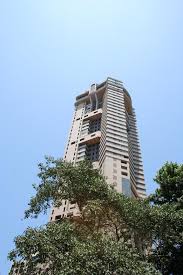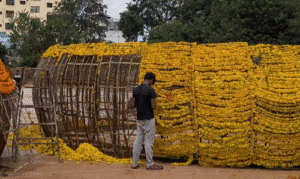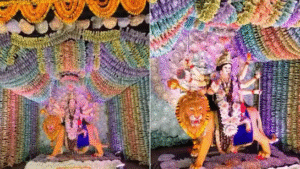Usha Kiran was one of the pioneering high-rise buildings in India, marking a significant turning point in the development of urban architecture, particularly high-rise buildings in the country. Here are more details about Usha Kiran:
Usha Kiran was constructed between 1964 and 1967 in Mumbai, which was then known as Bombay, the commercial capital of India.
The building was designed and developed during a time when the idea of high-rise buildings and modern skyscrapers was still in its nascent stages in India. It played a crucial role in introducing the concept of vertical urban living to Indian cities, especially Mumbai.
Usha Kiran was among the first few high-rise buildings to be constructed in Mumbai and was a notable example of modern architecture.
The structure was designed to accommodate the growing population of Mumbai and urbanize its skyline, which was traditionally composed of low-rise buildings.
The building utilized reinforced concrete and steel framing, which were becoming popular materials for high-rise construction globally at the time.
It was equipped with modern amenities of the era, setting the stage for future skyscraper designs in India.
Located in South Mumbai, Usha Kiran stood prominently amidst the older colonial-era buildings and was one of the tallest structures in the city at the time of its construction.
The building offered a stunning view of the Arabian Sea and was located in a prime residential and commercial area, adding to its appeal.
Usha Kiran was a pioneering project in the growing demand for residential high-rise buildings in India’s major cities, particularly in Mumbai, which faced space constraints due to its dense population.
As Mumbai continued to expand rapidly, Usha Kiran became an iconic representation of modernism in the urban landscape and set a trend for future high-rise developments in the city and across India.
The construction of Usha Kiran demonstrated the potential of high-rise residential buildings as a solution to space and housing shortages in cities like Mumbai. It became an essential part of the city’s evolution into a metropolitan hub.
Following Usha Kiran, there was a surge in the construction of other high-rise buildings in Mumbai, making the city’s skyline gradually more modern and globally competitive.
While Usha Kiran was one of the tallest buildings in Mumbai at the time of its completion, it eventually faced competition from newer, taller skyscrapers that followed. However, its place in the history of Indian urban architecture remains significant as one of the early landmarks of modern construction in the country.
Usha Kiran marked the beginning of high-rise living as a norm in urban areas of India, contributing to the architectural and social transformation that Indian cities underwent in the second half of the 20th century.
The completion of Usha Kiran in the 1960s paved the way for future skyscrapers in Mumbai and other parts of India. It played a role in shaping the modern skyline of the city, which today is dotted with a mix of residential, commercial, and mixed-use skyscrapers.
The concept of vertical cities became increasingly popular as Mumbai’s population grew, and the demand for living spaces in the city continued to rise.
Usha Kiran holds an important place in the history of urban architecture in India, being one of the first high-rise buildings in Mumbai. Its development in the 1960s represented a new era for the city’s architecture and contributed to the evolution of the urban landscape in India. It marked the beginning of modern skyscraper construction in Indian cities and was a precursor to the many high-rise buildings that would later shape India’s skyline, particularly in rapidly urbanizing cities like Mumbai.







